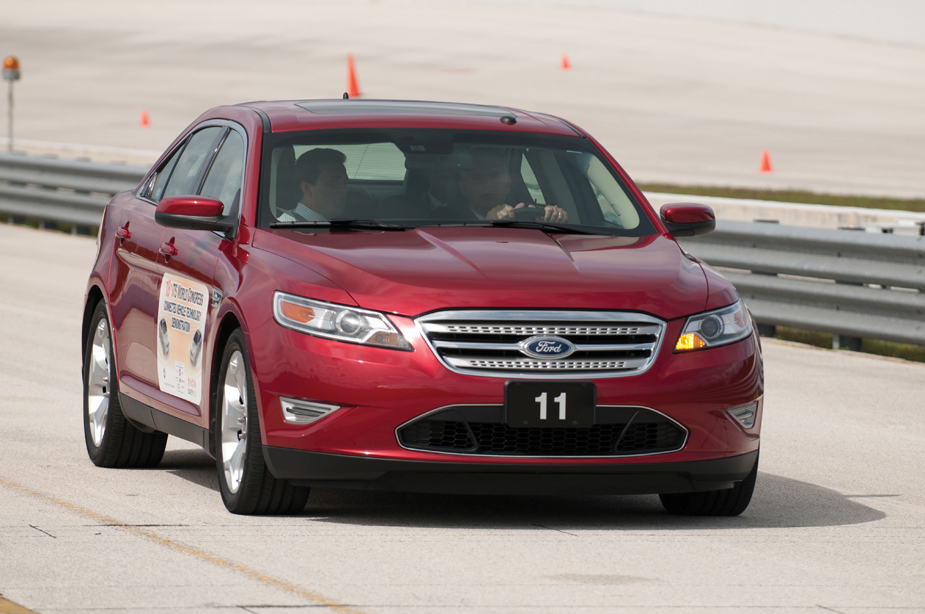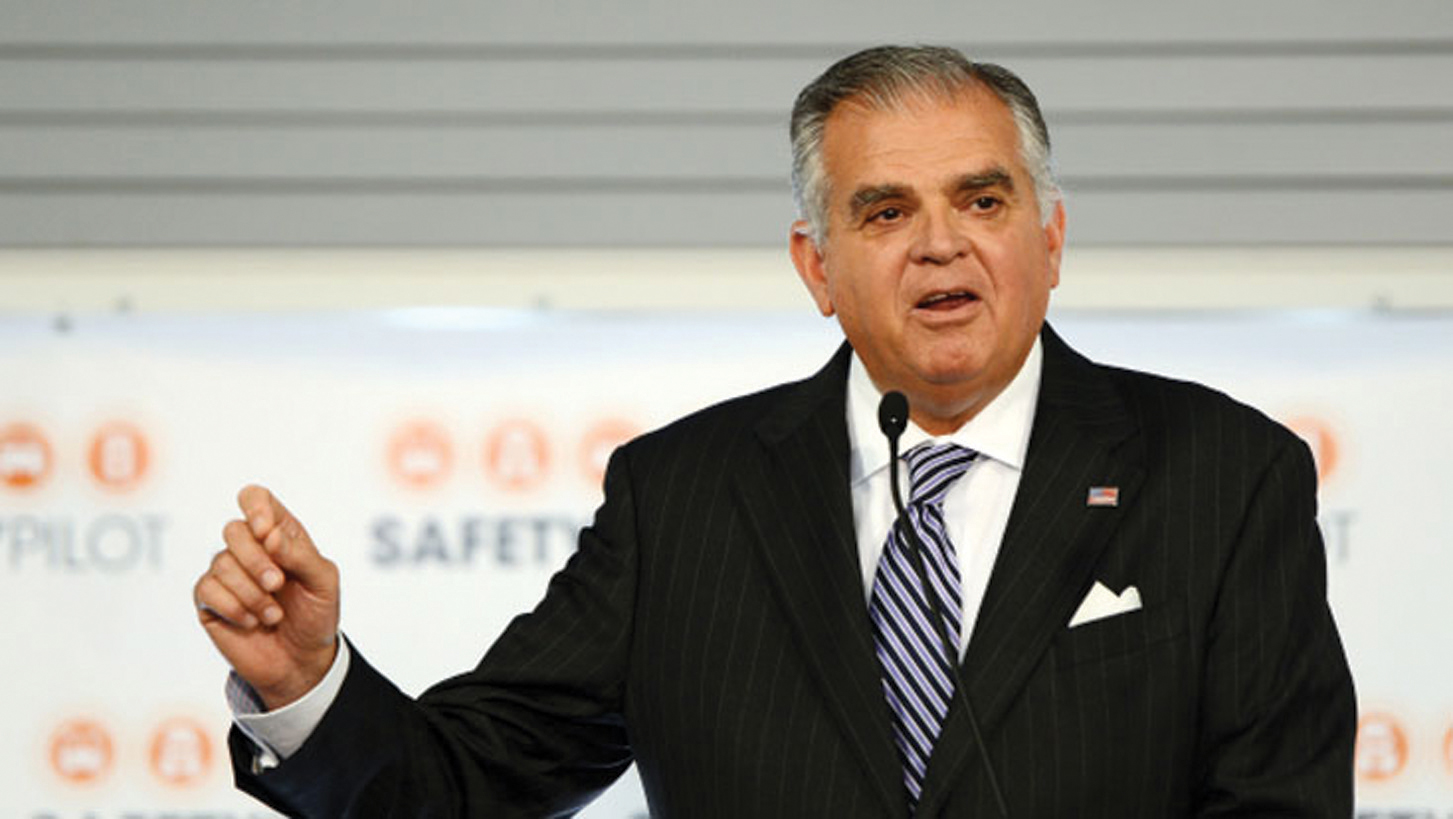
A series of 'driver clinics' is under way across five states, as vehicle manufacturers and the US Government pin their hopes on connected vehicles becoming the next big advance in road safety. Pete Goldin reports
What would a car say if it could talk? Its first words might be: "Here I am". Many vehicles are communicating that very message to each other right now. Admittedly, this is in controlled environments of
Each year more than 30,000 people are killed on US roads.
Research from USDoT's
"Connected vehicle technology is the next major vehicle safety advancement," says President and CEO of
Connecting vehicles
Connected vehicles communicate with each other and the roadway infrastructure via wireless technology. The primary objective is to warn drivers of potential dangers to help them avoid crashes, but the technology can also provide some valuable additional benefits by reducing congestion and greenhouse gas emissions.Connected vehicle technology involves both vehicle-to-vehicle (V2V) and vehicle-to-infrastructure (V2I) communications, transmitting vehicle data such as position, speed and location.
USDoT's ultimate vision of a next generation safety system is that all vehicles on the road - automobiles, trucks, buses, motor coaches and motorcycles - will be able to communicate with each other and infrastructure. The basic communication is a "Here I Am" message.
Currently, tests of connected vehicle technology are using a dedicated frequency spectrum at 5.9GHz called dedicated short range communication (DSRC), a form of WiFi with a special protocol designated 820.11p. DSRC has low latency and a short range and so is a communication option well suited for safety applications; more appropriate than other wireless alternatives such as cell phones.
USDoT is partnering with the Crash Avoidance Metrics Partnership (CAMP), a research consortium of major auto manufacturers established to push forward with development of connected vehicle technologies with research, testing and setting of standards. CAMP - which includes
Clinical trials
The latest phase of USDoT's connected vehicle programme is a series of 'driver clinics' under way since August 2011 and due to run until January 2012 in Brooklyn, MI; Brainerd, MN; Orlando, FL; Fort Worth, TX; and Blacksburg and Alameda, VA.
"These clinics are vital to understanding how drivers will respond to the technology and how connected vehicles communicate in real world scenarios," says NHTSA administrator David Strickland.
The purpose of the driver clinics is to enable researchers to observe the responses of drivers in cars equipped with V2V systems. About 100 local drivers are recruited to drive 24 cars at each of the clinics, which take place in controlled environments designed to simulate real roads and intersections, at venues such as Walt Disney World Speedway, Texas Motor Speedway and Alameda Naval Air Station. Drivers first watch a video explaining the different safety applications, before getting behind the wheel with professional drivers to go through a predetermined course where they experience the alerts and warnings generated by the connected vehicle applications.
"During the first driver clinic in Brooklyn, the safety applications were very well received, with several drivers commenting that they see some clear safety benefits to the technology," Greg Winfree says. He adds that at no time during the tests would the connected vehicle system take over control of the vehicle. The technology is designed solely to alert drivers to any impending hazards, at which time the driver would need to take appropriate action.
The specific alert messages tested at the clinics include emergency brake; forward collision, blind spot, lane change and 'do not pass' warnings; intersection movement assist; and left turn assist.
Getting the message across
In addition to automakers' connected vehicle research, a key goal of the clinics is determination of the best method of communicating warning alerts to drivers."We use an urgent tone and flashing red lights in a head-up display," explains Ford Product Development research technical leader Mike Shulman, referring to collision warning systems in development. "Our first goal is to get the driver to look around and brake. We want the driver to see that something is happening up ahead. So far in our testing that has worked really well. People understand it." Shulman explains that using a verbal warning or text message is not practical because of language issues. The alerts must be universally understood. In addition, text messages could be counterproductive because they would cause drivers to take eyes off the road at critical moments when they need to be very aware of their environments.
"It is all research right now," says
Pilot deployment
The driver clinics are the first phase of a two-part research program. The second will be a 'safety pilot model deployment' of V2V and V2I technology, due to begin in August 2012, after researchers have studied the data from the clinics.The model deployment, to be conducted by MDoT and the University of Michigan Transportation Research Institute (UMTRI), is being funded by a $14.9M research contract from the USDoT. "This project will involve some 2,800 vehicles equipped with wireless devices, everything from light to heavy and transit vehicles, that will spend a year on roadways in and around Ann Arbor in Michigan," says Winfree.
Since the driver interaction will be studied extensively during the clinics, this phase is only meant to test the wireless DSRC technology. MDoT's Steve Cook expects the connected vehicle system to be used during the model deployment will not even alert the drivers. "The aims of the model deployment are to see how much data we can manage in a confined area and how we can pinpoint where all the vehicles are," he explains.
On the roads
Results from both phases of the research programme will be used by NHTSA to determine whether V2V and V2I technology will be required for all vehicles operating on US roads. NHTSA's decision is expected to be made in 2013 for light vehicles and 2014 for heavy vehicles.Even if mandated by NHTSA, however, connected vehicle technology may still face a difficult road. One of the primary challenges to real world implementation is the fact that all vehicles currently on the road will somehow have to be retrofitted with appropriate equipment. If only new vehicles have the technology installed, it will defeat the whole concept of connected vehicles, because for years most of the cars on the road will not be able to communicate. So development of communication devices by the US vehicle aftermarket will be a vital factor in the success of the connected roadway.
Another implementation challenge, exacerbated by the retrofit issue, starts with the big question: who is going to pay for all this? "In terms of funding for the deployment, we think that the extra cost to the vehicle will be relatively low," says Mike Shulman. "But how much it will cost and ultimately who will pay for it - there are a lot of different pieces that still have to come together." Steve Cook says: "We have to decide who is going to implement the infrastructure and who is going to maintain and operate it. There are a lot of decisions still to be made." Connected vehicle technology also faces a public acceptance challenge, due to concerns about privacy, because vehicle locations and information will be transmitted to government authorities and third parties. The experts all agree this is an important issue, but one that will be overcome because, they believe, drivers will ultimately accept that this technology does not invade privacy as vehicle data is anonymous.
USDoT and its automaker partners in CAMP clearly feel the benefits of connected vehicle technology are worth the effort in trying to overcome the challenges. David Strickland concludes: "We envision connected vehicle technology as a platform for saving many lives on America's roads. It also promises to foster innovations we've yet to imagine - a game changer for safety."










